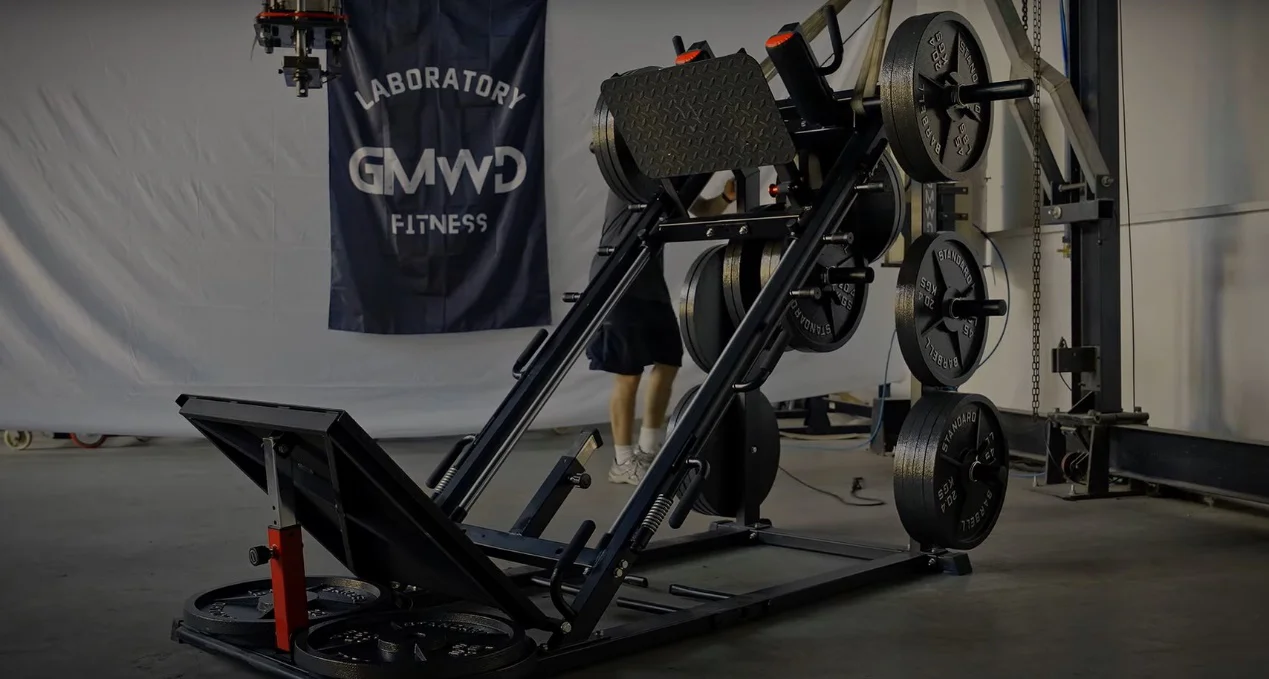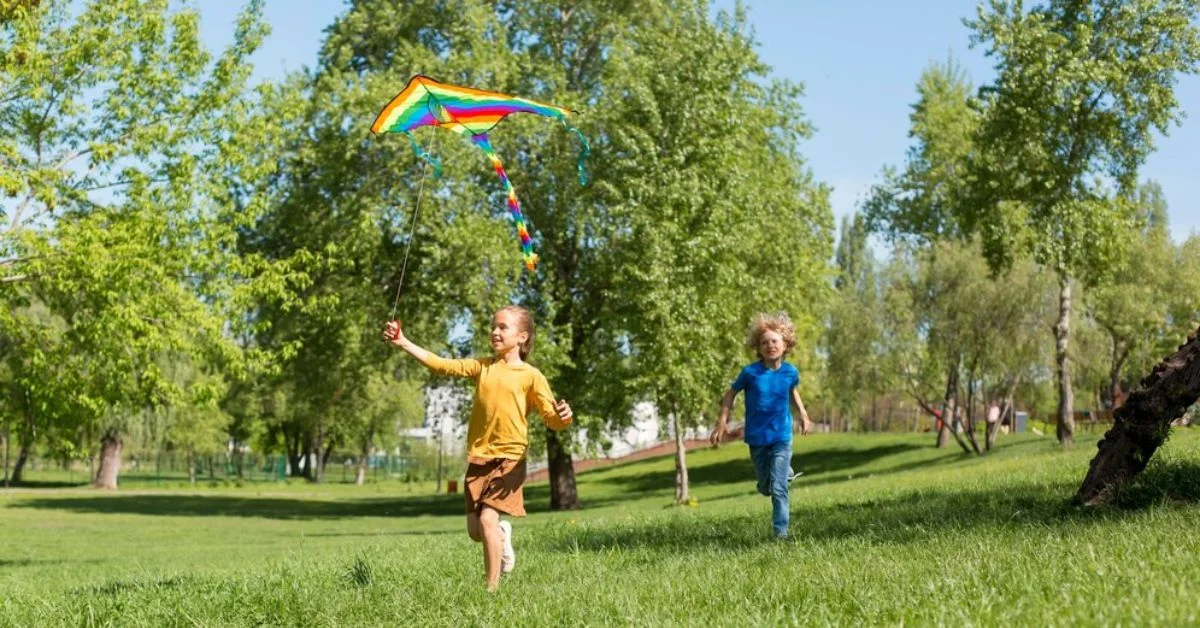SPORTS
The Ultimate Guide to the Leg Press Machine: Benefits, Usage, and Tips for Optimal Results

Are you looking to build stronger legs and enhance your lower body workout? The leg press machine might be your perfect gym companion. Whether you’re a beginner or a seasoned fitness enthusiast, understanding how to effectively use the leg press machine can significantly improve your strength training regimen. In this comprehensive guide, we’ll delve into everything you need to know about the gmwdfitness leg press machine, its benefits, proper usage, and expert tips to maximize your workouts.
What is a Leg Press Machine?
The leg press machine is a staple in most gyms, designed to target the major muscles in your lower body, including the quadriceps, hamstrings, glutes, and calves. Unlike free-weight exercises like squats, the leg press provides a controlled environment that can help beginners build strength and confidence before progressing to more complex movements.
ALSO READ: The Exciting World of Sports with Horse: A Comprehensive Overview
Types of Leg Press Machines
- Horizontal Leg Press: This traditional version has a horizontal seat and platform, offering a straightforward movement pattern.
- 45-Degree Leg Press: Positioned at a 45-degree angle, this type allows for a greater range of motion and is popular for its effectiveness in muscle engagement.
- Vertical Leg Press: Less common but useful for targeting specific muscle groups with minimal strain on the back.
Benefits of Using the Leg Press Machine
Incorporating the leg press machine into your workout routine offers numerous advantages:
1. Muscle Building and Strength
The leg press effectively targets the quadriceps, hamstrings, and glutes, promoting muscle hypertrophy and increased strength. By adjusting the weight and repetitions, you can tailor your workouts to meet specific fitness goals.
2. Enhanced Joint Stability
Using the leg press machine can improve joint stability in the knees and hips by strengthening the surrounding muscles. This can be particularly beneficial for individuals recovering from injuries or those looking to prevent future joint issues.
3. Controlled Movement
The guided motion of the leg press machine minimizes the risk of improper form, reducing the likelihood of injury. This makes it an excellent choice for beginners who are still mastering their lifting techniques.
4. Versatility
Leg press machines often come with adjustable settings, allowing users to modify foot placement and seat position. This versatility enables you to target different muscle groups and vary your workouts to prevent plateaus.
How to Use the Leg Press Machine Correctly
Proper usage of the leg press machine is crucial to maximize benefits and minimize the risk of injury. Follow these steps to ensure you’re performing the exercise correctly:

Step 1: Adjust the Machine
- Seat Position: Sit down and adjust the seat so that your knees are at a 90-degree angle when your feet are placed on the platform.
- Back Support: Ensure your back is firmly against the backrest to provide stability throughout the movement.
Step 2: Foot Placement
- Width: Place your feet shoulder-width apart on the platform.
- Position: For overall leg development, position your feet centrally. To target the inner thighs, move your feet closer together; for the outer thighs, place them wider apart.
Step 3: Execution
- Starting Position: Push the platform away by extending your legs, but avoid locking your knees.
- Controlled Descent: Slowly bend your knees to lower the platform back towards you, maintaining a controlled movement.
- Repetition: Complete the desired number of repetitions, typically between 8-12 for muscle building.
Step 4: Breathing
- Exhale as you push the platform away.
- Inhale as you return to the starting position.
Expert Tips for Maximizing Your Leg Press Workouts
To get the most out of your leg press machine sessions, consider the following tips:
1. Warm-Up Properly
Always start with a dynamic warm-up to increase blood flow to your muscles and prepare your joints for the workout. Light cardio or dynamic stretches are excellent choices.
2. Maintain Proper Form
Avoid using excessively heavy weights that compromise your form. Focus on controlled movements and full range of motion to effectively target the muscles.
3. Vary Your Foot Placement
Changing your foot placement can target different muscle groups and prevent workout monotony. Experiment with different stances to find what works best for you.
4. Incorporate Progressive Overload
Gradually increase the weight or the number of repetitions over time to continue challenging your muscles and promoting growth.
5. Include Complementary Exercises
Balance your leg press workouts with other lower body exercises like squats, lunges, and deadlifts to ensure comprehensive muscle development.
Common Mistakes to Avoid on the Leg Press Machine
Even with its simplicity, certain errors can hinder your progress and increase injury risk:
1. Locking the Knees
Fully extending your legs and locking your knees puts unnecessary stress on the joints. Always keep a slight bend in your knees at the top of the movement.
2. Using Momentum
Swinging the weight or using jerky movements reduces the effectiveness of the exercise and increases injury risk. Focus on smooth, controlled motions.
3. Incorrect Foot Placement
Placing your feet too high or too low on the platform can shift the focus away from the intended muscles. Ensure your feet are positioned correctly to target the right muscle groups.
4. Rushing the Repetitions
Performing repetitions too quickly can compromise form and reduce muscle engagement. Take your time to perform each rep with precision.
Safety Considerations
While the leg press machine is generally safe, adhering to these safety guidelines can help prevent injuries:
- Start with Light Weights: Especially if you’re new to the exercise, begin with lighter weights to master the form.
- Use Spotters if Needed: If you’re lifting heavy, having a spotter can provide additional safety.
- Listen to Your Body: If you experience pain (beyond normal muscle fatigue), stop the exercise and consult a professional.
Conclusion
The leg press machine is an invaluable tool for building lower body strength, enhancing muscle definition, and improving overall fitness. By understanding its benefits, mastering proper usage, and implementing expert tips, you can effectively incorporate the leg press into your workout routine and achieve your fitness goals. Remember to prioritize form, gradually increase intensity, and stay consistent for the best results. Whether you’re aiming to sculpt your legs or enhance your athletic performance, the leg press machine can play a pivotal role in your fitness journey.
Frequently Asked Questions (FAQ)
1. Is the leg press machine better than squats?
Both exercises are effective for building leg strength, but they target muscles slightly differently. Squats engage more stabilizer muscles and mimic natural movement patterns, while the leg press allows for heavier weights with less risk of injury. Incorporating both into your routine can provide comprehensive benefits.
2. How often should I use the leg press machine?
For optimal results, include the leg press in your lower body workouts 2-3 times per week, allowing at least 48 hours of rest between sessions to promote muscle recovery.
3. Can the leg press machine help with weight loss?
While the leg press primarily targets muscle building, increasing muscle mass can boost your metabolism, aiding in weight loss. Combining leg press workouts with a balanced diet and cardio exercises can enhance weight loss efforts.
4. What muscles does the leg press machine work?
The leg press primarily targets the quadriceps, hamstrings, glutes, and calves. Depending on foot placement, it can also engage the inner and outer thighs.
5. Can beginners use the leg press machine?
Absolutely. The leg press machine is beginner-friendly as it provides support and stability, allowing newcomers to safely build strength before progressing to more complex exercises.
SPORTS
Creating a Home Golf Practice Space: Turning Your Yard or Basement into a Training Ground

In recent years, the trend of creating personal golf practice areas at home has seen significant growth.
With advancements in technology and increased accessibility to high-quality equipment, golf enthusiasts are finding it easier than ever to refine their skills from the comfort of their own homes.
Having a dedicated space for golf practice not only saves time and trips to the driving range but also allows for more frequent practice sessions, regardless of weather conditions.
DIY Golf Simulator: The Centerpiece of Home Golf Practice
A DIY golf simulator is often the centerpiece of any home golf setup. It combines technology and convenience, allowing golfers to simulate playing on real golf courses around the world.
This setup is not just about fun; it’s a serious training tool that can provide detailed feedback on every shot, helping to improve your game systematically.
Planning Your Space
The first step in setting up a home golf simulator is evaluating the available space. Whether you’re considering transforming a section of your yard or repurposing your basement, the amount of space available will dictate the type of equipment you can install. Ensure there is enough room for a full swing, especially if you plan to use drivers or longer clubs.
Outdoor vs. Indoor Setups
For outdoor setups, factors like weather, privacy, and the level of permanence need consideration. Outdoor simulators can offer a more realistic golf feel but require weather-resistant materials and may need more maintenance.
Indoor setups, on the other hand, offer year-round accessibility and can be set up in a garage, basement, or spare room. Key considerations include ceiling height, space dimensions, and environmental control to protect the technology from humidity and extreme temperatures.
Essential Components of a Golf Simulator
A basic DIY golf simulator setup includes several key components:
- Launch Monitors: These devices track the speed, angle, and spin of the golf ball and are crucial for simulating realistic shot outcomes.
- Impact Screens: Durable screens capture and display the trajectory of the golf balls.
- Hitting Mats: These replicate the feel of a golf course and provide a realistic surface from which to hit balls.
- Projectors: For more advanced setups, projectors can display the simulation on the impact screen, enhancing the visual experience.
Detailed Component Selection
- Launch Monitors: The Rapsodo MLM2PRO is a popular choice for its accuracy and affordability, capable of providing detailed analytics like ball speed and flight path. It’s ideal for those who want professional-level feedback without a steep price tag.
- Impact Screens: The choice of screen will depend on your budget and the quality of simulation you desire. From high-end options that offer stunning visual clarity and durability to more economical choices that still provide good performance, there’s a screen for every budget.
- Hitting Mats: Quality hitting mats are essential for a realistic golfing experience. Look for mats that offer different turf conditions and can accommodate real tees for an authentic feel.
- Projectors: While not necessary for all setups, a good quality projector can make your simulator experience more immersive. Ensure the projector is compatible with the screen size and offers clear, bright images even in well-lit rooms.
Each component plays a vital role in creating an effective and enjoyable home golf simulator. Choosing the right options based on your space, budget, and golfing goals is crucial for building a setup that meets your practice needs.
Step-by-Step Guide on Installing the Golf Simulator
- Positioning the Launch Monitor and Screen: Start by placing the launch monitor at the recommended distance from where you’ll be hitting the golf ball, usually about 6-8 feet behind the hitting area. Ensure it has a clear line of sight to where the ball will be struck.
- Screen Installation: Mount the impact screen in a location where there is sufficient space behind it to absorb the impact without damage. The screen should be tightly secured to reduce slack that can affect the display quality.
- Projector Setup: If using a projector, mount it either on the ceiling or on a high shelf directly opposite the screen. Ensure the projector’s lens is aligned with the center of the screen for the best display. Adjust the focus and zoom to fill the screen entirely without any spill over.
- Lighting and Sound Adjustments: Optimize lighting to avoid glare on the screen while ensuring the hitting area is well-lit. For sound, if your simulator setup includes audio feedback, position speakers in a way that enhances the simulation experience without being too obtrusive.
Tips for DIY Installation
- Cable Management: Keep all cables tidy and secure to avoid any tripping hazards or interference with the equipment.
- Calibration: After installation, calibrate the simulator according to the manufacturer’s instructions to ensure accuracy.
- DIY or Professional Help: While many golf enthusiasts can set up their simulator independently, don’t hesitate to hire a professional, especially for complex setups involving extensive electrical work or structural modifications.
Enhancing Your Practice Space
Suggestions for Additional Accessories
- Golf Mats: Invest in a high-quality golf mat that simulates various turf conditions. This can enhance the realism of your practice sessions.
- Nets and Side Barriers: To ensure safety and prevent damage to surrounding areas, install nets or side barriers around the simulator. These catch errant shots and contain balls within the designated hitting area.
- Ball Trays and Organizers: Keep golf balls organized and within easy reach by using ball trays or similar organizers. This mimics the convenience of a driving range and keeps your practice sessions flowing smoothly.
Ideas for Integrating Multi-Use Components
- Retractable Screens: If space is limited, consider a retractable impact screen that can be stowed away when not in use. This allows the room to be used for other activities.
- Convertible Furniture: Use furniture that can double as storage or seating when the simulator is not in use. For instance, storage benches or ottomans can hold golf equipment or accessories.
- Virtual Multi-Sport Software: Some golf simulators offer software packages that include other sports, turning your golf practice area into a multi-sport simulator. This is ideal for families or athletes interested in a variety of sports.
By following these guidelines and incorporating the right equipment and accessories, you can create a functional and enjoyable home golf practice space.
Using Your Simulator for Improvement
Practicing Different Aspects of Your Game
A golf simulator can be an excellent tool for enhancing various aspects of your game. Utilize the simulator software to focus on:
- Driving: Work on your swing speed, launch angle, and accuracy. Many simulators offer feedback on these metrics, allowing you to make precise adjustments.
- Chipping: Set up scenarios within the software to practice chipping from various distances and lies, helping improve your short game under different conditions.
- Putting: Although simulators are less known for their putting accuracy, some software provides settings to practice putting lines and speed control, essential for shaving strokes off your game.
Features of Popular Golf Simulator Software
- Creative Golf 3D: Offers a realistic golfing experience with a variety of game modes, including full courses, driving ranges, and skill contests. It also includes fun games like mini-golf, making it suitable for family use as well as serious practice.
- OptiShot: Known for its user-friendly interface and accurate analytics, OptiShot provides a variety of virtual courses and a driving range mode. It’s designed to be accessible for golfers of all levels, with adjustable settings to match your skill level.
Keeping Your Simulator in Top Condition
To ensure the longevity and performance of your golf simulator:
- Regular Updates: Keep the software updated to take advantage of the latest courses and features. Regularly update the firmware of your hardware components as well.
- Cleaning and Checks: Regularly clean your equipment, especially the hitting area and sensors. Check for wear and tear, especially in nets and mats, and replace them as necessary to maintain safety and accuracy.
- Upgrading Components: As technology advances, consider upgrading components like the launch monitor or projector to enhance the simulation experience and maintain accuracy.
Final Remarks
Creating a dedicated home golf practice space, whether in your yard or basement, is a practical step for any golfer looking to improve their game conveniently and consistently.
By carefully selecting the right equipment and setting up designated areas for different aspects of the game, you can create a personalized training environment that meets your specific needs.
Such a space not only allows for uninterrupted practice sessions but also saves time and money in the long run by eliminating frequent trips to the driving range.
Ultimately, investing in a home golf practice area is an investment in your golfing skills, providing a private and tailored space where you can work on your game at any time, regardless of weather conditions.
SPORTS
Springtime Thrills: Top 5 Outdoor Sports for Kids’ Fun

Eenjoy the enchantment of spring, where nature bursts into life, offering the ideal backdrop for kids to dive into thrilling outdoor sports. Discover how these activities not only spark joy but also nurture our children’s physical fitness and well-being.
Benefits of Engaging in Outdoor Sports for Kids
Spring is the perfect time for kids to get outdoors and enjoy the many benefits of engaging in sports activities. Playing outdoor sports not only helps children stay active but also promotes physical fitness and overall health.
Outdoor sports provide an opportunity for kids to develop important social skills such as teamwork, communication, and leadership. It allows them to interact with their peers in a fun and engaging environment, fostering friendships and building valuable relationships.
Moreover, being outdoors exposes children to fresh air and sunlight, which are essential for their physical and mental well-being. It also encourages them to disconnect from screens and technology, promoting a healthier lifestyle.
Participating in outdoor sports can boost children’s confidence levels as they learn new skills, overcome challenges, and achieve personal goals. Additionally, it teaches them the importance of perseverance, discipline, and resilience.
Top 5 Outdoor Sports for Kids:
A. Soccer
Springtime is the perfect season for kids to lace up their cleats and hit the soccer field. The thrill of scoring a goal or making a fantastic save can spark excitement in young athletes. Soccer not only improves physical fitness but also enhances teamwork and communication skills as players work together towards a common goal.
With its fast-paced nature, soccer keeps kids active and on their toes throughout the game. Running, kicking, and passing the ball help develop coordination and agility while boosting cardiovascular endurance. Plus, being part of a team fosters social connections and teaches valuable lessons about sportsmanship.
Whether playing in an organized league or just kicking around with friends at the park, soccer offers endless fun for kids of all ages. So grab a ball, gather some teammates, and get ready to enjoy the exhilarating world of soccer this spring!
B. Inline Skating
Spring’s finally here. It’s prime time for kids to grab their inline skates and zoom around outside! Inline skating, or rollerblading, is such a blast for them – they get to feel the wind rush past as they cruise around.
Picture them on their Nattork inline skates, mastering their balance and pulling off cool moves, whether they’re on smooth paths or showing off at the skate park. It’s not just fun – it’s a great workout too, building up those leg muscles and making them more agile.
And hey, it’s not just about fitness. Inline skating is a perfect excuse for them to hang out with friends or family who love it too. Of course, safety first! Make sure they’ve got their helmets, knee pads, and wrist guards sorted for some worry-free fun.
So why not nudge your kid to dive into the world of inline skating this spring? Trust me, they’ll thank you for it!

C. Biking
Springtime is the perfect season for kids to grab their bikes and hit the great outdoors. Biking not only provides a fun way to stay active but also helps improve balance, coordination, and cardiovascular health.
Riding a bike allows children to explore new places, from neighborhood parks to scenic trails. It’s a fantastic opportunity for them to develop independence and confidence while enjoying the fresh air and sunshine.
Whether it’s cruising around the block with friends or embarking on family biking adventures, kids can experience the thrill of speed and freedom that comes with pedaling through nature’s beauty.
With proper safety gear like helmets and knee pads, biking can be a safe activity for children of all ages. Parents can join in on the fun by organizing group rides or participating in local biking events.
Encouraging kids to bike not only promotes physical fitness but also creates lasting memories of outdoor exploration and adventure. So pump up those tires, hop on your bikes, and let the cycling adventures begin!
D. Hiking
Spring is the perfect time to lace up those hiking boots and hit the trails with your little adventurers. Hiking offers a fantastic opportunity for kids to connect with nature, breathe in fresh air, and explore new surroundings. The sense of accomplishment they feel when reaching a scenic viewpoint or conquering a challenging trail is priceless.
Hiking also provides excellent physical exercise, helping children develop strength, endurance, and coordination while burning off energy in a fun and engaging way. With each step along the path, kids can discover fascinating plants, animals, and geological features that spark their curiosity and expand their knowledge of the natural world.
Encouraging your children to embrace hiking fosters a lifelong love for outdoor exploration and instills valuable skills like navigation, problem-solving, and teamwork. So grab some water bottles, pack some snacks, put on comfortable shoes – it’s time to hit the trails!
E. Frisbee/Ultimate Frisbee
When it comes to outdoor fun for kids, Frisbee and Ultimate Frisbee are classic choices that never get old. The simple joy of tossing a colorful disc back and forth can provide hours of entertainment for children of all ages.
Frisbee is a great way to improve hand-eye coordination, agility, and teamwork skills in a lighthearted setting. Kids can enjoy the thrill of running around catching the flying disc or strategizing with their friends during an Ultimate Frisbee match.
Whether playing casually at the park or joining a more structured game, Frisbee activities offer a perfect blend of exercise and social interaction. Plus, it’s an affordable sport that requires minimal equipment but guarantees maximum smiles and laughter.
So next time you’re looking for a fun outdoor activity for your kids, grab a Frisbee and head outside for some active playtime under the sun!
Safety Measures for Outdoor Sports
When it comes to outdoor sports for kids, safety should always be a top priority. Make sure your child wears the appropriate protective gear such as helmets, knee pads, and elbow pads before engaging in any physical activity.
Ensure that the equipment they are using is properly fitted and in good condition to prevent any accidents or injuries. Supervise your child closely, especially if they are trying out a new sport for the first time.
Teach them about basic rules and techniques of the sport to minimize risks during playtime. Encourage them to stay hydrated and take breaks when needed to prevent exhaustion or dehydration.
Always choose safe locations for outdoor activities with proper facilities and adequate space for kids to move around freely. Educate your child about potential hazards like uneven terrain or busy roads so they can be more aware while having fun outdoors!
Tips for Parents to Encourage Outdoor Play
Encouraging your kids to engage in outdoor play is not only beneficial for their physical health but also for their overall well-being. As a parent, you can take simple steps to promote outdoor activities and make them fun for your children.
One tip is to lead by example – show enthusiasm for outdoor sports and join in the fun with your kids. You can plan family outings that involve outdoor games like soccer or biking, creating lasting memories together.
Another approach is to limit screen time and encourage outdoor play instead. Setting boundaries on device usage can motivate kids to explore the outdoors and enjoy physical activities such as hiking or playing frisbee.
Additionally, providing the right gear like Nattork inline skates or kids roller blades ensures safety while having fun outdoors. Investing in quality equipment will enhance their experience and make them more eager to participate in outdoor sports.
Moreover, praising their efforts and progress during outdoor play sessions boosts their confidence and motivates them to continue being active outside. By positively reinforcing their participation, you cultivate a love for nature and physical activity that can last a lifetime.
The Importance of Getting Kids Active Outdoors
Springtime is the perfect season to get kids active outdoors and participating in various sports. Engaging in outdoor activities not only promotes physical health but also enhances mental well-being and social skills. From soccer to hiking, there are numerous options for children to enjoy the fresh air and sunshine while staying active.
As parents, it is crucial to encourage and support your kids in exploring different outdoor sports. Whether it’s kicking a soccer ball around, gliding on inline skates, pedaling a bike, trekking through nature trails, or tossing a frisbee with friends – these activities can instill a love for being outside and moving their bodies.
By incorporating outdoor sports into their routine, children can develop essential life skills such as teamwork, communication, resilience, and confidence. Not only will they stay physically fit but also mentally stimulated by the challenges each sport presents.
So this spring season, make it a priority to get your kids off the couches and screens and out into the great outdoors. Let them experience the thrill of running on a soccer field or feeling the wind in their hair while skating on Nattork inline skates/Kids inline skates/kids roller blade. The benefits of engaging in outdoor sports go beyond just physical fitness – it’s about fostering a lifelong love for being active and healthy amidst nature’s beauty.
SPORTS
How Sports Hospitality is Changing the Game for Fans

Sports fans have always been passionate about their teams and the games they love to watch. But in recent years, the sports hospitality industry has undergone a major transformation, offering fans an experience that goes far beyond just watching the game. From luxurious suites and exclusive club areas to immersive digital experiences and personalized services, the world of sports hospitality is changing the game for fans in exciting new ways.
Embracing the Digital Age
One of the biggest trends in sports hospitality, especially within the realm of Arsenal football hospitality, is the rise of premium seating options. Teams like Arsenal and venues associated with them are investing heavily in creating high-end suites, club lounges, and other exclusive areas that offer fans a more luxurious game-day experience.
These premium spaces often come with perks like gourmet catering, private bars, and even personal concierge services tailored specifically for Arsenal football enthusiasts. With such amenities, fans can enjoy world-class treatment while still being right in the heart of the action, providing the best of both worlds for those seeking an unparalleled match-day experience at Arsenal football events.
Creating a Sense of Community
But it’s not just about the physical spaces anymore. Sports hospitality is also embracing the digital age in innovative ways. Many teams and venues are using technology to enhance the fan experience, from mobile ordering and contactless payment to augmented reality and interactive apps. Fans can now order food and drinks right from their seats, skip the long concession lines, and even access exclusive content and behind-the-scenes footage through their smartphones.
Challenges and Opportunities
But it’s not just about the amenities and technology; it is also about creating a sense of community and belonging for fans. Many teams and venues are investing in shared spaces and social experiences that bring fans together in new and exciting ways. From themed fan clubs and interactive fan zones to live music and entertainment, the goal is to create a holistic experience that goes beyond just watching the game.
Of course, this transformation in sports hospitality hasn’t come without its challenges. As teams and venues strive to offer more luxurious and immersive experiences, the cost of attending a game has skyrocketed, pricing out many casual fans. There’s also the question of how to balance the needs of premium ticket holders with those of the average fan, who may feel left out of the VIP experience.
But despite these challenges, the sports hospitality industry is rising to the occasion. Many teams and venues are finding creative ways to engage fans at all levels, from offering more affordable ticket options to creating shared spaces and experiences that bring the entire fan base together. And as technology continues to evolve, the possibilities for enhancing the fan experience are only going to continue to grow.
Ultimately, the transformation of hospitality is about one thing: creating a deeper, more meaningful connection between fans and the teams and sports they love. By offering luxurious amenities, immersive digital experiences, and a sense of community, sports hospitality is changing the game for fans in ways that are both exciting and inspiring. Whether you’re a die-hard season ticket holder or a casual fan, the future of sports hospitality is sure to captivate and delight.

 TECHNOLOGY4 months ago
TECHNOLOGY4 months agoBlog Arcy Art: Where Architecture Meets Art

 ENTERTAINMENT1 week ago
ENTERTAINMENT1 week agoExploring the Kristen Archives: A Treasure Trove of Erotica and More

 ENTERTAINMENT4 days ago
ENTERTAINMENT4 days agoKiss KH: The Streaming Platform Redefining Digital Engagement and Cultural Currents

 LIFESTYLE4 months ago
LIFESTYLE4 months agoThe Disciplinary Wives Club: Spanking for Love, Not Punishment

 LIFESTYLE1 week ago
LIFESTYLE1 week agoWho Is Sandra Orlow?

 GENERAL4 months ago
GENERAL4 months agoWhat are stories of male chastity? A Comprehensive Guide

 EDUCATION4 days ago
EDUCATION4 days agoLingrohub Platform: A Complete Student Access Guide

 ENTERTAINMENT4 weeks ago
ENTERTAINMENT4 weeks agoMonkeyGG2: Your Personal Gaming Hub










